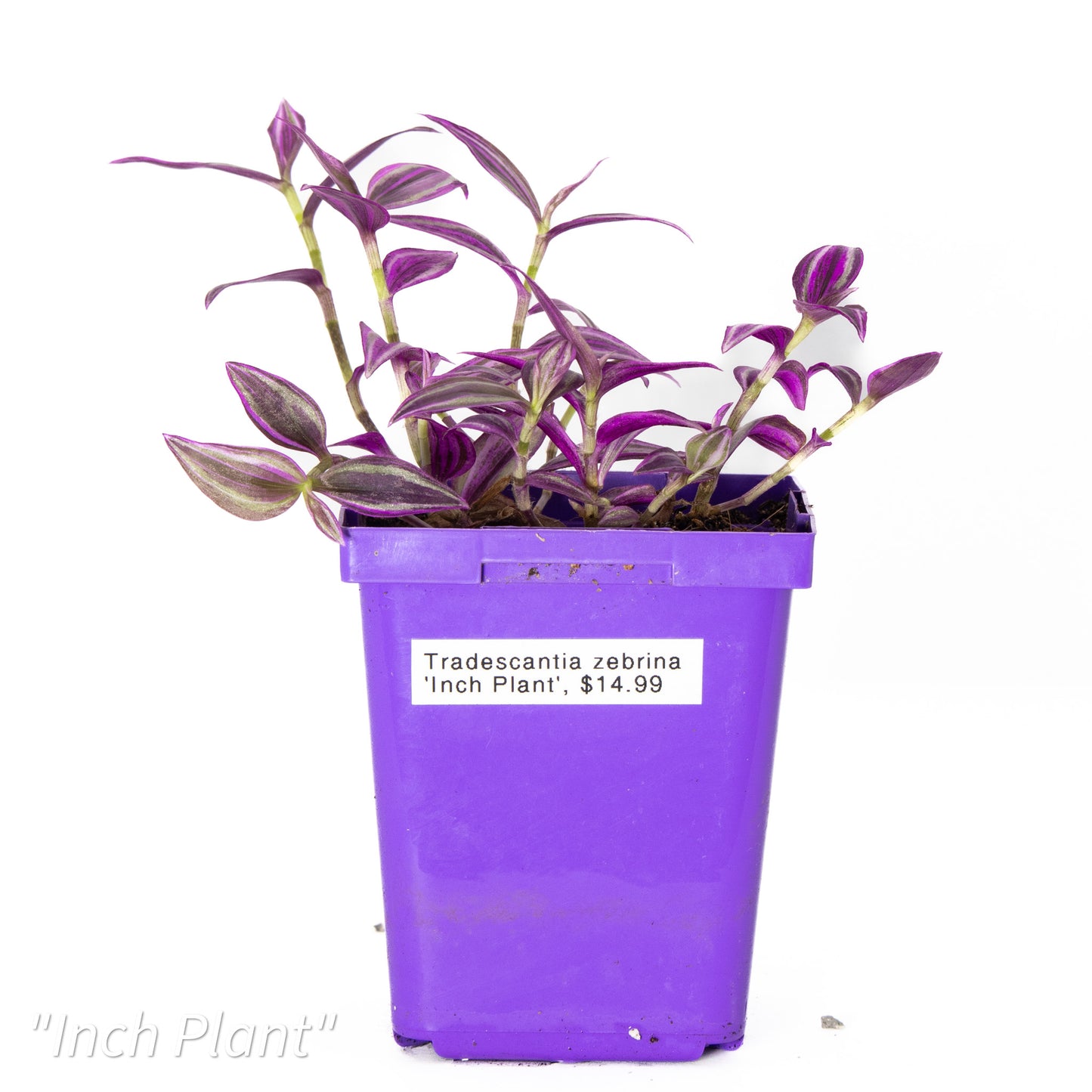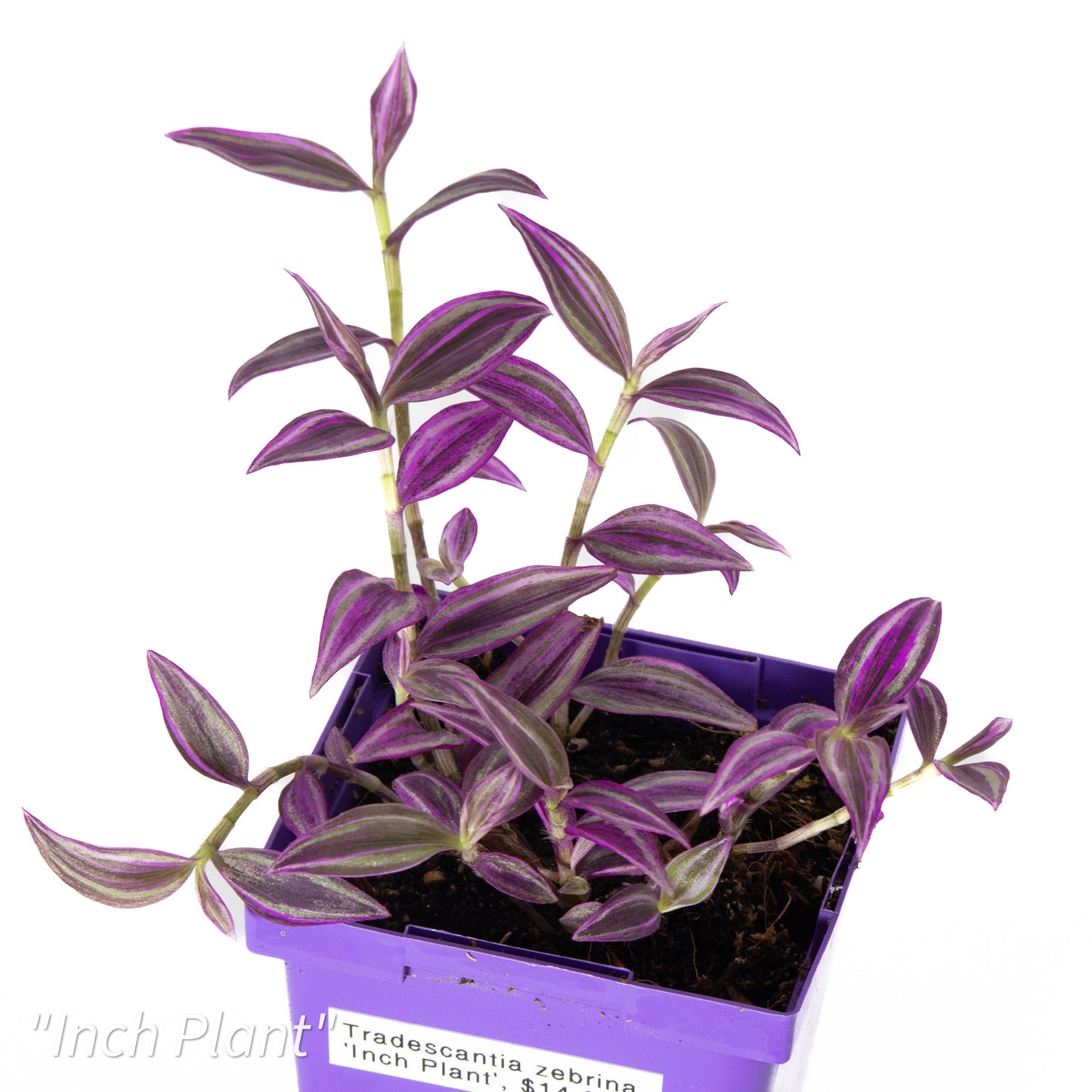Royal Python's Cove
Tradescantia zebrina ‘Inch Plant’
Tradescantia zebrina ‘Inch Plant’
Couldn't load pickup availability
Tradescantia zebrina, commonly known as the Inch Plant, is a fast-growing, trailing plant renowned for its striking purple, silver, and green foliage. Native to Mexico and Central America, this plant is a vibrant addition to any bioactive setup. It thrives in moist, humid conditions and is appreciated for its ability to spread quickly, creating lush ground cover or cascading trails in terrariums, vivariums, and other bioactive environments.
Care Instructions
LIGHT. Prefers bright, indirect light but can tolerate low light conditions. However, the vibrant purple and silver hues will be most pronounced when exposed to adequate light. In bioactive setups, place the Inch Plant near a light source to maintain its color. Avoid placing it in direct sunlight, as this can scorch the leaves, especially in humid environments.
SOIL. Requires a well-draining soil mix that retains moisture but doesn't become waterlogged. A blend of coconut coir, perlite, and orchid bark provides both moisture retention and good aeration for healthy root development. In bioactive environments, this mix will also support decomposers like springtails and isopods, which contribute to maintaining soil health and balance.
WATERING. Keep the soil consistently moist, but avoid letting it sit in water. Water when the top inch of soil begins to dry out. The Inch Plant enjoys regular moisture but does not tolerate soggy soil, which can lead to root rot. In bioactive setups, springtails and isopods help manage excess moisture by breaking down organic material, so you don’t need to worry too much about over-watering, but always ensure good drainage.
HUMIDITY. Thrives in high humidity (60% or above), making it a great fit for bioactive environments. The plant will flourish in the moist conditions typically found in terrariums or vivariums. Regular misting or a shallow water dish can help maintain the humidity levels needed for optimal growth.
TEMPERATURE. Prefers warm temperatures between 65°F and 80°F (18°C to 27°C). The Inch Plant can tolerate slightly cooler temperatures but should be kept away from drafts or cold air, which can cause stress. A steady, warm environment is key to maintaining its vibrant foliage and encouraging rapid growth.
FERTILIZATION. During the growing season (spring and summer), feed with a balanced liquid fertilizer every 4-6 weeks. In fall and winter, reduce fertilization as the plant’s growth slows. In bioactive setups, the presence of decomposers like isopods and springtails may help enrich the soil, reducing the need for frequent fertilization.
Cohabitation with Bioactive Organisms
ISOPODS. Isopods are valuable partners for Tradescantia zebrina in bioactive setups. They help break down plant debris, uneaten food, and other organic material, keeping the substrate healthy and nutrient-rich. The decaying leaves of the Inch Plant provide food for the isopods, supporting a balanced and self-sustaining ecosystem.
SPRINGTAILS. Springtails thrive in the moist, humid conditions that the Inch Plant enjoys. These tiny creatures help manage mold, fungi, and decaying organic material, ensuring that the plant’s roots stay healthy and free from rot. Springtails also contribute to the overall health of the substrate by feeding on decaying matter, preventing the buildup of harmful substances in the soil.
Soil and Maintenance Tips
SUBSTRATE. A well-draining, nutrient-rich substrate is ideal for Tradescantia zebrina. Use a mix of coconut coir, orchid bark, and perlite to create an environment that provides proper moisture retention and aeration. You can also add a thin layer of activated charcoal at the bottom of the tank to help with filtration and odor control.
HUMIDITY CONTROL. To maintain the humidity levels required for optimal growth, use a shallow water dish, light misting, or humidity trays in your bioactive setup. Keep humidity levels above 60% to ensure the plant remains healthy and vibrant. This also benefits the decomposers living in the substrate.
TRIMMING. The Inch Plant grows rapidly and may require regular trimming to control its size and shape. You can trim back the stems to encourage bushier growth. The cuttings are easy to propagate, either in water or soil, allowing you to expand your collection or share with others.
PEST CONTROL. Tradescantia zebrina is generally pest-resistant, but in bioactive setups, springtails and isopods will help control any small pests like aphids or mealybugs by feeding on their larvae and eggs. If pests become a concern, you can manually remove them or introduce additional pest control measures if necessary.
Tradescantia zebrina ‘Inch Plant’ adds beautiful color and dynamic growth to bioactive environments. Its fast-spreading, trailing vines create lush ground cover or cascading displays in terrariums and vivariums. By maintaining proper humidity, light, and soil conditions, you can ensure this plant thrives in your setup, creating a beautiful and healthy ecosystem for both the plant and its companion organisms.
Share




